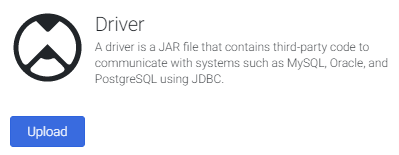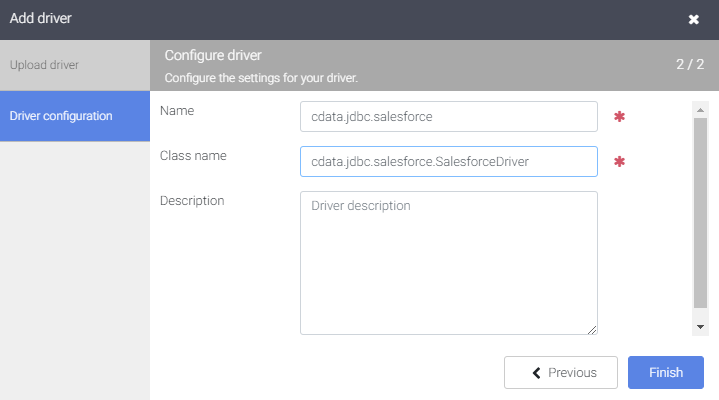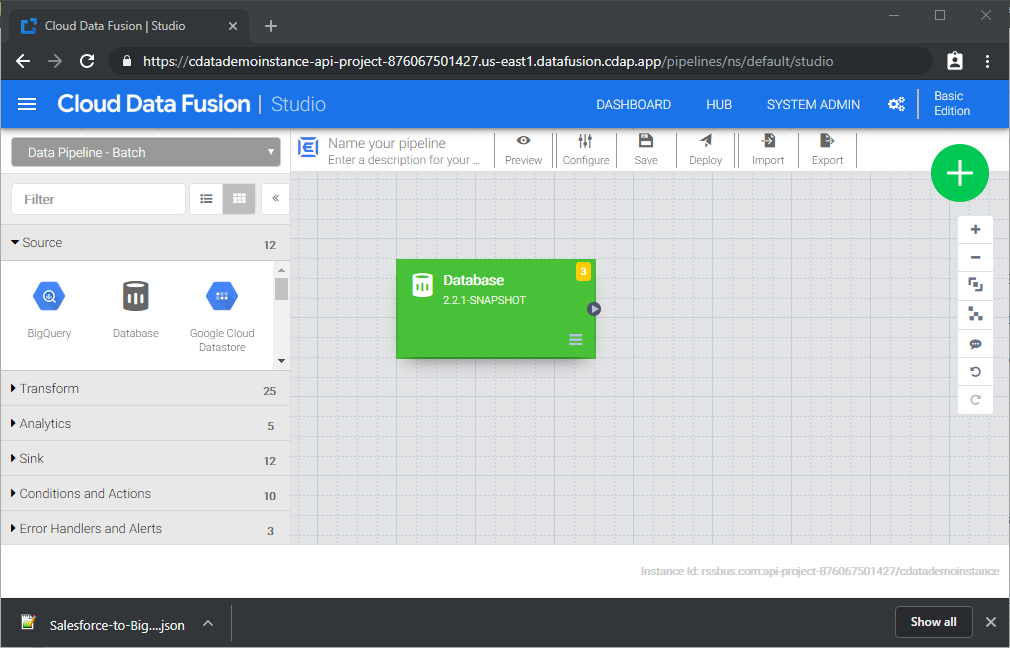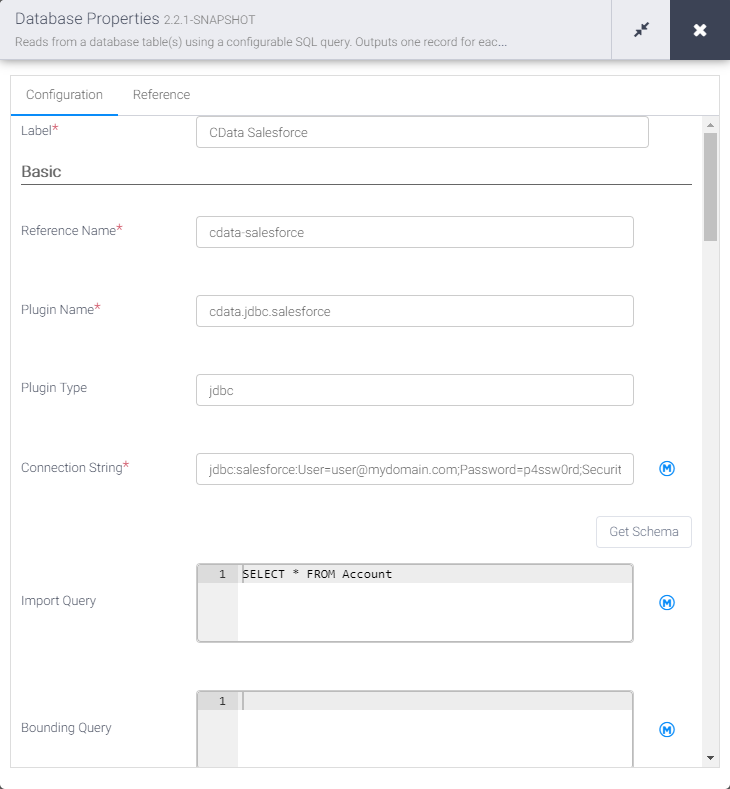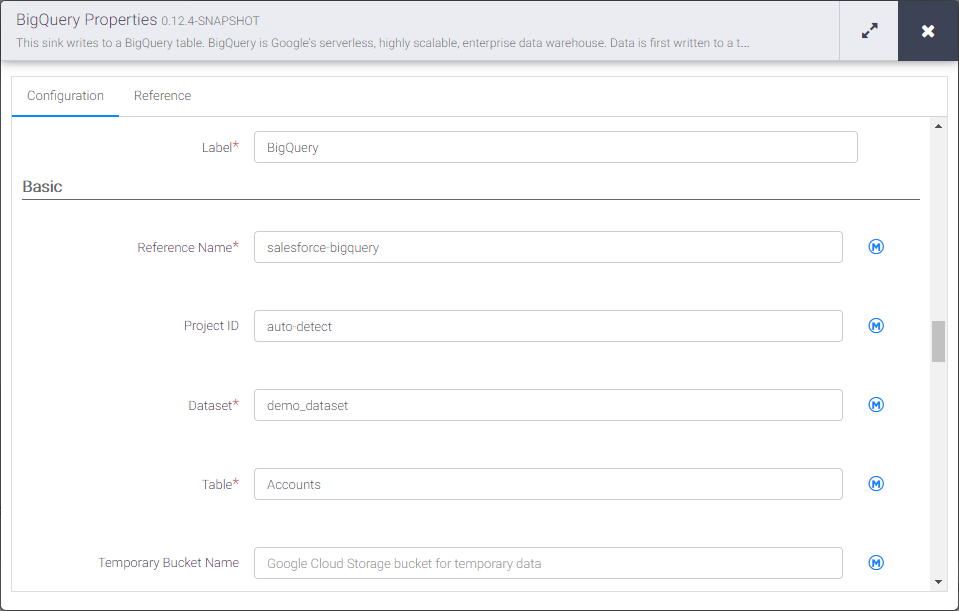Discover how a bimodal integration strategy can address the major data management challenges facing your organization today.
Get the Report →Build Adobe Commerce-Connected ETL Processes in Google Data Fusion
Load the CData JDBC Driver into Google Data Fusion and create ETL processes with access live Adobe Commerce data.
Google Data Fusion allows users to perform self-service data integration to consolidate disparate data. Uploading the CData JDBC Driver for Adobe Commerce enables users to access live Adobe Commerce data from within their Google Data Fusion pipelines. While the CData JDBC Driver enables piping Adobe Commerce data to any data source natively supported in Google Data Fusion, this article walks through piping data from Adobe Commerce to Google BigQuery,
Upload the CData JDBC Driver for Adobe Commerce to Google Data Fusion
Upload the CData JDBC Driver for Adobe Commerce to your Google Data Fusion instance to work with live Adobe Commerce data. Due to the naming restrictions for JDBC drivers in Google Data Fusion, create a copy or rename the JAR file to match the following format driver-version.jar. For example: cdataadobe commerce-2020.jar
- Open your Google Data Fusion instance
- Click the to add an entity and upload a driver
![]()
- On the "Upload driver" tab, drag or browse to the renamed JAR file.
- On the "Driver configuration" tab:
- Name: Create a name for the driver (cdata.jdbc.adobe commerce) and make note of the name
- Class name: Set the JDBC class name: (cdata.jdbc.adobe commerce.Adobe CommerceDriver)
![Configuring the driver (Salesforce is shown.)]()
- Click "Finish"
Connect to Adobe Commerce Data in Google Data Fusion
With the JDBC Driver uploaded, you are ready to work with live Adobe Commerce data in Google Data Fusion Pipelines.
- Navigate to the Pipeline Studio to create a new Pipeline
- From the "Source" options, click "Database" to add a source for the JDBC Driver
![Adding a database source]()
- Click "Properties" on the Database source to edit the properties
NOTE: To use the JDBC Driver in Google Data Fusion, you will need a license (full or trial) and a Runtime Key (RTK). For more information on obtaining this license (or a trial), contact our sales team.
- Set the Label
- Set Reference Name to a value for any future references (i.e.: cdata-adobe commerce)
- Set Plugin Type to "jdbc"
- Set Connection String to the JDBC URL for Adobe Commerce. For example:
jdbc:adobe commerce:RTK=5246...;OAuthClientId=MyConsumerKey;OAuthClientSecret=MyConsumerSecret;CallbackURL=http://127.0.0.1:33333;Url=https://myAdobe Commercehost.com;InitiateOAuth=GETANDREFRESH;Adobe Commerce uses the OAuth 1 authentication standard. To connect to the Adobe Commerce REST API, you will need to obtain values for the OAuthClientId, OAuthClientSecret, and CallbackURL connection properties by registering an app with your Adobe Commerce system. See the "Getting Started" section in the help documentation for a guide to obtaining the OAuth values and connecting.
You will also need to provide the URL to your Adobe Commerce system. The URL depends on whether you are using the Adobe Commerce REST API as a customer or administrator.
Customer: To use Adobe Commerce as a customer, make sure you have created a customer account in the Adobe Commerce homepage. To do so, click Account -> Register. You can then set the URL connection property to the endpoint of your Adobe Commerce system.
Administrator: To access Adobe Commerce as an administrator, set CustomAdminPath instead. This value can be obtained in the Advanced settings in the Admin menu, which can be accessed by selecting System -> Configuration -> Advanced -> Admin -> Admin Base URL.
If the Use Custom Admin Path setting on this page is set to YES, the value is inside the Custom Admin Path text box; otherwise, set the CustomAdminPath connection property to the default value, which is "admin".
Built-in Connection String Designer
For assistance in constructing the JDBC URL, use the connection string designer built into the Adobe Commerce JDBC Driver. Either double-click the JAR file or execute the jar file from the command-line.
java -jar cdata.jdbc.adobe commerce.jarFill in the connection properties and copy the connection string to the clipboard.
![Using the built-in connection string designer to generate a JDBC URL (Salesforce is shown.)]()
- Set Import Query to a SQL query that will extract the data you want from Adobe Commerce, i.e.:
SELECT * FROM Products
![Configuring the database source]()
- From the "Sink" tab, click to add a destination sink (we use Google BigQuery in this example)
- Click "Properties" on the BigQuery sink to edit the properties
- Set the Label
- Set Reference Name to a value like adobe commerce-bigquery
- Set Project ID to a specific Google BigQuery Project ID (or leave as the default, "auto-detect")
- Set Dataset to a specific Google BigQuery dataset
- Set Table to the name of the table you wish to insert Adobe Commerce data into
![Configuring the BigQuery sink]()
With the Source and Sink configured, you are ready to pipe Adobe Commerce data into Google BigQuery. Save and deploy the pipeline. When you run the pipeline, Google Data Fusion will request live data from Adobe Commerce and import it into Google BigQuery.
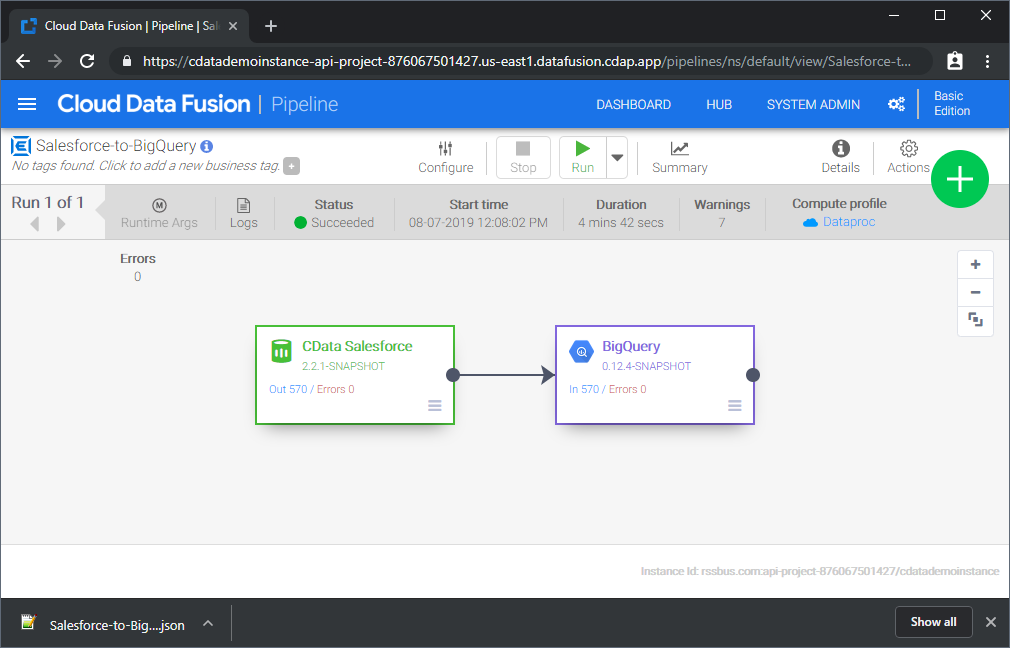
While this is a simple pipeline, you can create more complex Adobe Commerce pipelines with transforms, analytics, conditions, and more. Download a free, 30-day trial of the CData JDBC Driver for Adobe Commerce and start working with your live Adobe Commerce data in Google Data Fusion today.






